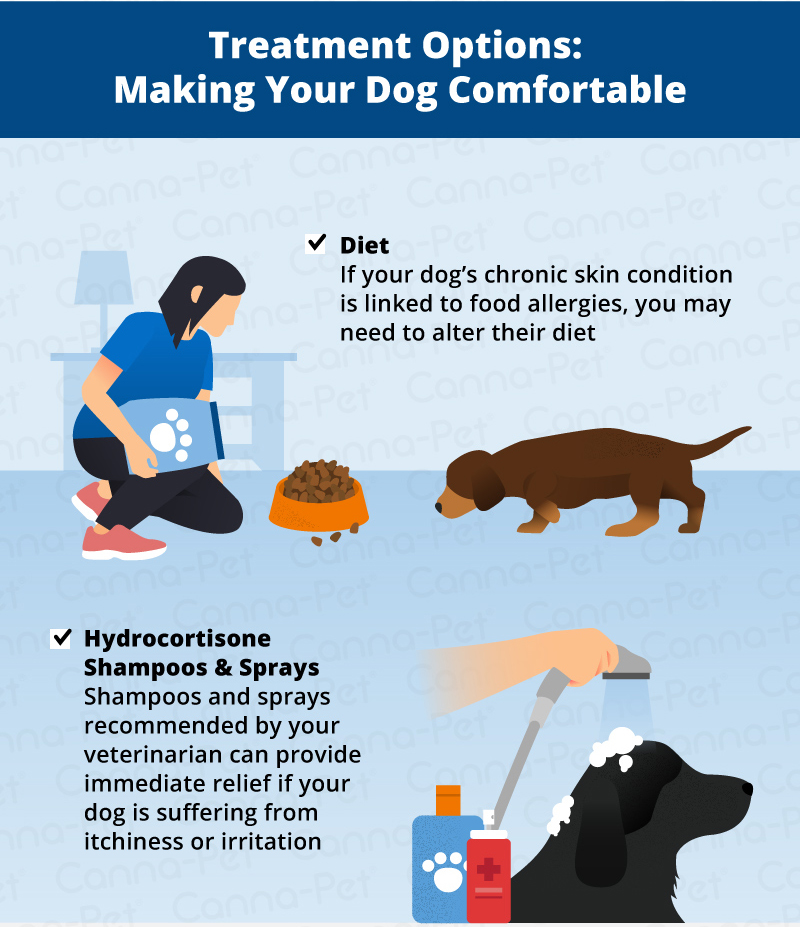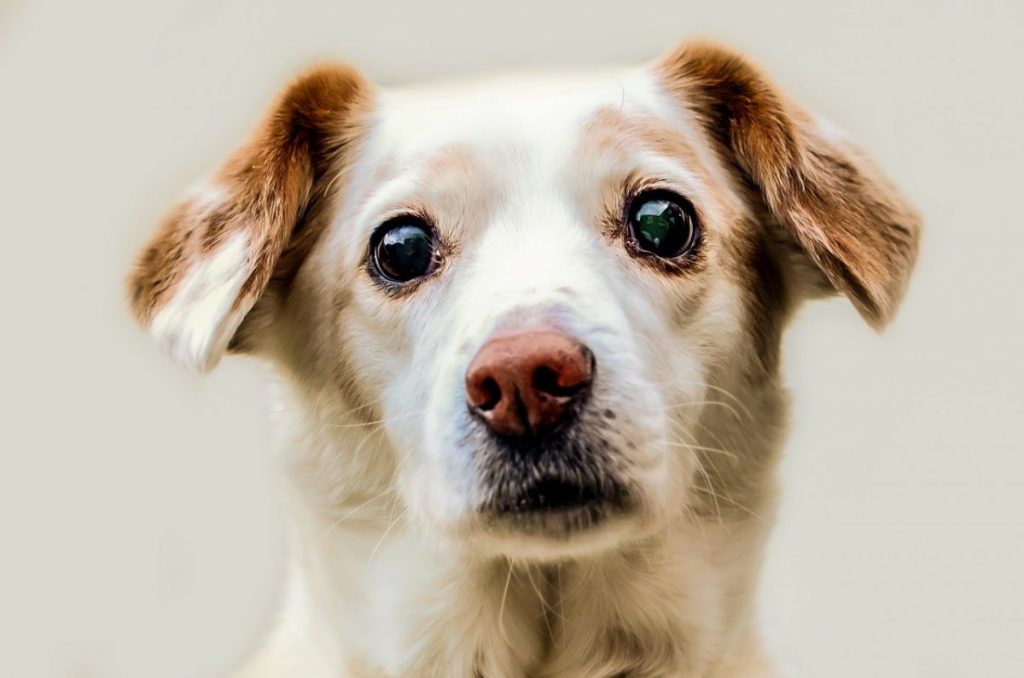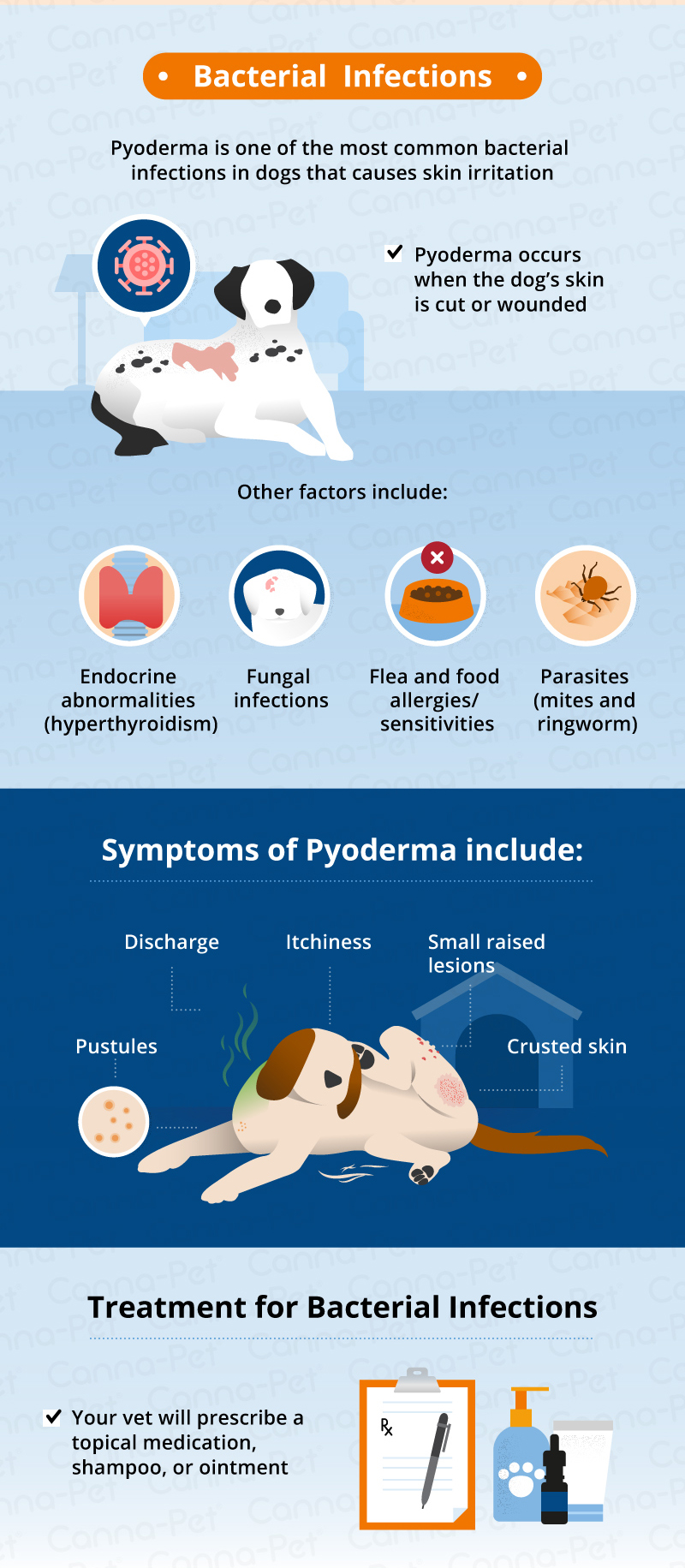As any dog owner knows, it’s common for your pooch to shed – unless he’s a breed that isn’t known for shedding due to his type of coat (such as a Poodle or a Bichon Frise), most canines shed hair on a regular basis. However, if you notice bald patches on your furry friend’s coat, it may be cause for concern. Therefore, it is important to educate yourself on what causes hair loss in dogs, how to recognize the signs of dog hair loss, and how to treat it.
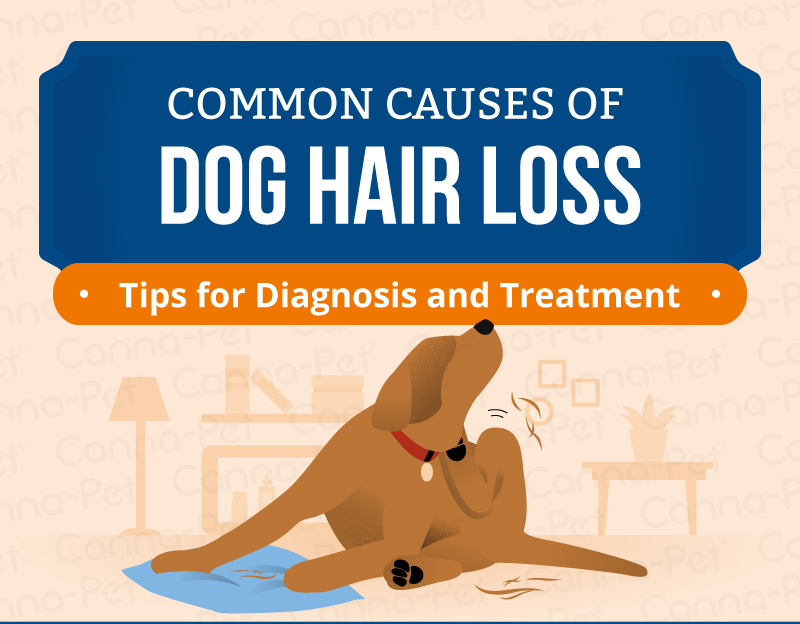
Your Dog and Alopecia: Recognizing the Signs
One of the most common dog skin conditions linked to hair loss in dogs is known as alopecia, an affliction that can result in partial or even complete hair loss. Although the term ‘alopecia’ is a general term used to describe hair loss in dogs, this unfortunate condition actually stems from a variety of possible sources. In addition to your dog’s coat, it can also affect his skin, endocrine, lymphatic and immune systems.
Alopecia doesn’t discriminate – it can affect both dogs and cats of all ages, genders and breeds. Your veterinarian will be able to determine if your pet is suffering from this disorder, and if so, if it’s an acute or gradual case.
Some of the most common characteristic signs and symptoms of alopecia in dogs include:
- Varied/symmetrical hair loss
- Bald circles or patches
- Inflammation and crusting around affected area
- Scaling of the skin and presence of lesions
- Redness of the skin (erythema)
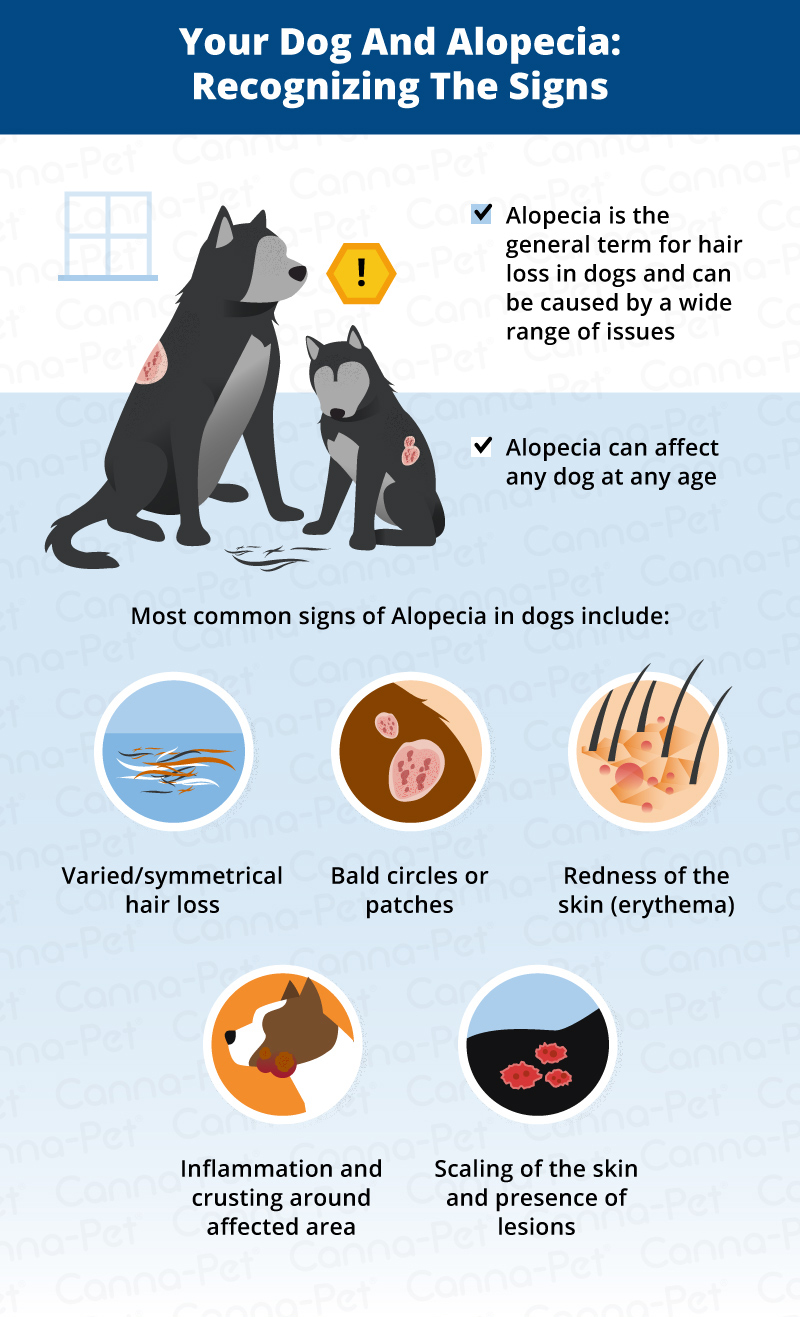
Mites, Ringworm and Bacteria: Identifying Specific Skin Infections
Experts believe that dogs with a weakened immune system are more prone to mange, a broad term used to describe a variety of skin infections specific to dogs. In addition, other genetic factors may lead to a predisposition for different types of infections. Here are a few common causes of mange in dogs:
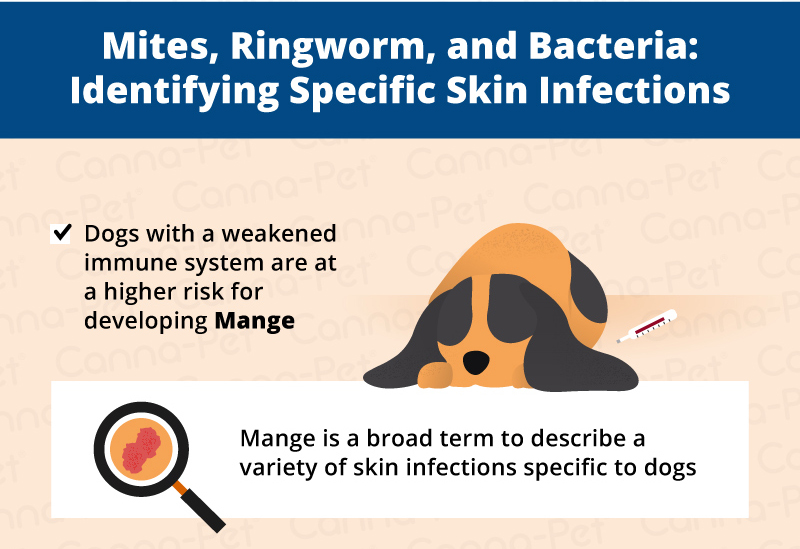
Demodectic Mange
Demodectic mange, also known as demodicosis, is a skin condition that is transferred by a variety of mites (most notably the Demodex mite). Although mange is classified as an inflammatory disease, the severity of your dog’s symptoms depends on the type of mite inhabiting your pet. Skin lesions and hair loss (alopecia) are typically the result of an overpopulation of skin mites found on the skin/hair follicles of your dog.
Your vet will perform skin scrapings (known as a trichogram) to identify the type of mite and consequently the severity of your dog’s condition. In addition, your vet may run urine tests to determine if the mange is the result of other underlying disorders, such as genetic and hormonal/endocrine (thyroid) related issues. Although the mode of transmission for certain types of mites is unknown, the Demodex canis is typically transferred from mother to newborn pups during nursing.
It is important to note that while demodectic mange is uncomfortable for your dog, it is not a contagious disease – since the mite is found on nearly all dogs, exposure of a healthy dog to one with demodectic mange is not dangerous. In addition, it cannot be transmitted to cats or humans.
Treatment for Demodectic Mange
Once you have received a diagnosis from your vet, you will know what to expect: whereas a localized case of demodicosis (i.e., mild symptoms affecting specific areas of the body) typically resolves itself on its own, severe generalized cases (inflammatory symptoms affecting the entire body) usually require long-term medication, including lime-sulfur dips as prescribed by your vet.
In either scenario, it’s important to monitor your dog’s overall health and healing process, and administer any types of medication exactly as instructed by your veterinarian. Maintaining your dog’s good health with regular visits to your vet along with a well-balanced diet can help prevent some cases of mange. Experts also suggest that dogs who suffer from chronic mange should not be bred, as it may be a genetically inherent condition and passed onto offspring.
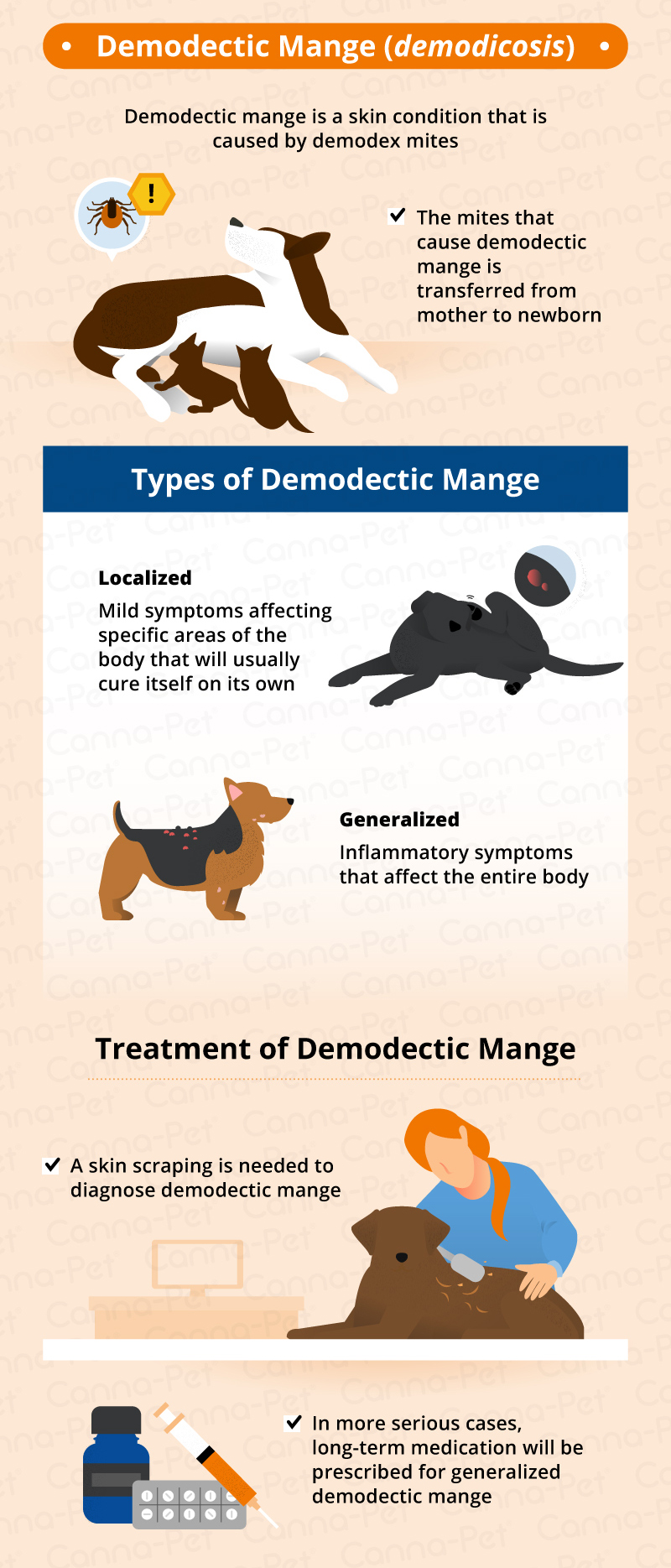
Sarcoptic Mange
Sarcoptic mange, also known as canine scabies, is caused by the Sarcoptes scabiei mite. Unlike demodectic mange, this skin disease is highly contagious to other animals as well as humans. Because these mites burrow deeply into the skin, they cause intense irritation and itching; as a result, your dog’s incessant scratching will lead to hair loss until the ailment is treated.
Locations where dogs are in close quarters – including dog parks, animal shelters, kennels, groomers, and even vet clinics – are usually where dogs are exposed to this infection, with symptoms typically showing up 2-6 weeks later.
Once you’ve brought your canine companion to the vet to rule out other causes (including bacterial infections, food allergies, and chiggers), your veterinarian will run a series of tests to identify the specific type of mite in order to plan a course of treatment.
Treatment for Sarcoptic Mange
Depending on the type of sarcoptic mange your pooch is being treated for, your vet will prescribe scabicidal dips, shampoos, and/or oral medication. It is essential to follow your vet’s instructions carefully and complete all treatments in order to reach a successful outcome. Experts recommend that pet owners quarantine their dog while he is being treated for the disease to protect further cross-contamination to other pets and family members. However, making your pup as comfortable as possible throughout the treatment is essential to his emotional and physical well-being.
Try to keep him on a regular feeding schedule, and ensure he has a calm place to sleep at night that is free of upholstered furniture or bedding (to avoid the spread of mites). Although there are no known preventative measures for sarcoptic mange, maintaining a healthy immune system has been proven to protect dogs against the reoccurrence of this condition.
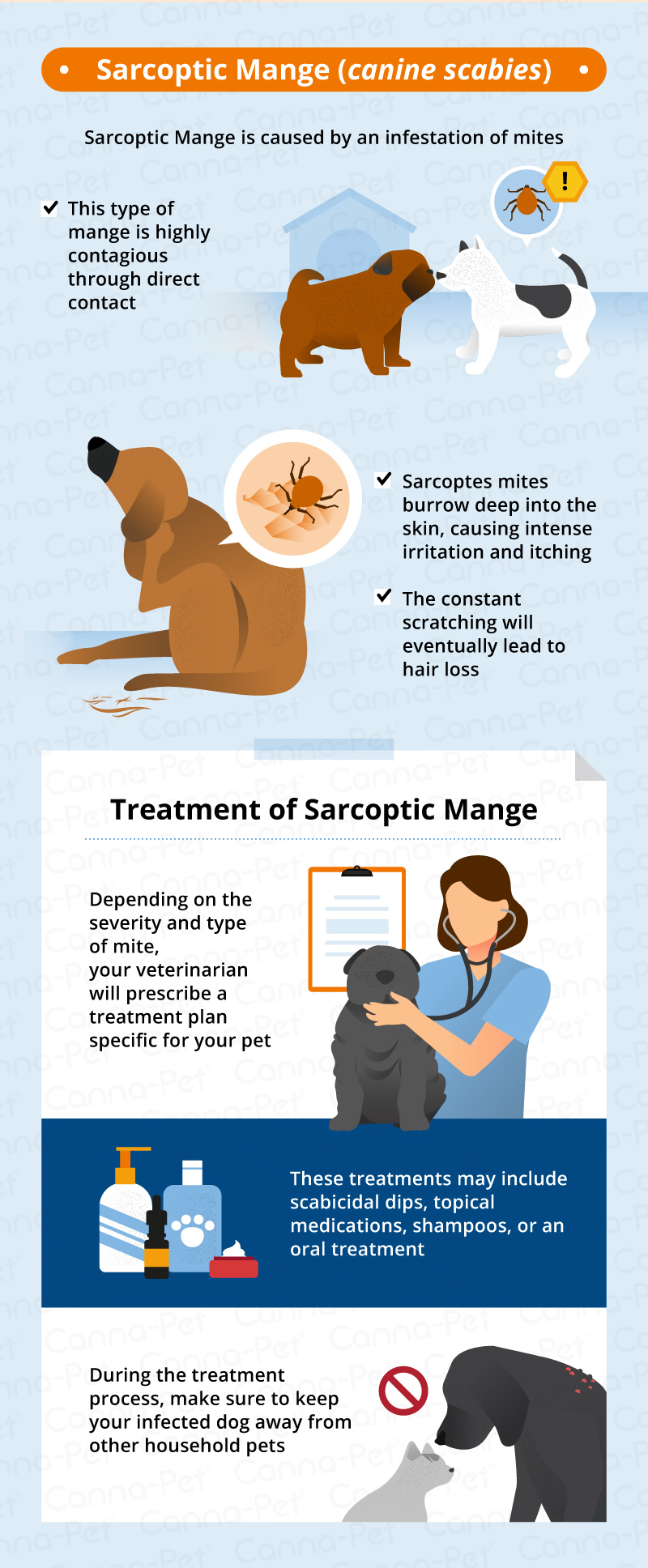
Ringworm
A parasitic fungal infection also known as Microsporum canis, ringworm is a condition that affects the skin, hair and/or nails. Typically diagnosed in young animals, this disease occurs in dogs, cats and other mammals, including humans. In addition to general symptoms associated with alopecia, ringworm also causes darkened skin and different types of lesions (nodular and kerion), as well as inflammation found around the skin bordering your dog’s nails.
Although some dogs may carry the disease but not display any outward signs or symptoms, they are still contagious and may pass on the fungal infection to other pets and humans. Geographic location plays a part with regard to the presence of the specific fungus; however, disease or medication may decrease your dog’s ability to fight off this pesky fungal infection. In addition, your dog’s overall health, nutrition, and exposure to other animals can increase his risk of infection.
Treatment for Ringworm
Once your vet has performed a fungal culture of skin clippings and run various tests including hair samples and/or skin biopsies to determine the diagnosis, he or she may recommend an Elizabethan (cone-shaped) collar to prevent him from biting and licking the affected areas and ingesting any topical antifungal medications.
As in the case of sarcoptic mange, an adequate quarantine period is essential to prevent the further spread of the infection amongst household members (both animal and human). It is also noteworthy that if you believe your dog has access to rodents anywhere in your environment, be sure to take all preliminary precautions to eliminate them, as they are known to aid in the spread of ringworm infections.

Bacterial Infections
As we have discovered, there are a number of ways dogs are at risk for skin infections. One of the most common bacterial infection of the skin is known as pyoderma, which occurs when a dog’s skin is either wounded, cut, or the result of breed characteristics (such as skin folds or pressure calluses).
Other risk factors include fungal infections, endocrine abnormalities (such as hyperthyroidism – and over production of the thyroid hormone), flea and food allergies/sensitivities, and parasites, including mites and ringworm. In certain cases, staphylococcus intermedius (staph infection) may also be the culprit; your vet can administer tests to confirm the cause and treatment for this diagnosis.
In addition to the symptoms outlined in the alopecia section, pyoderma can also display pustules, discharge, crusted skin and small raised lesion, and is often accompanied by itchiness. In most instances, your vet will examine your dog’s skin on a superficial basis to determine a course of treatment; in the case where it is a deeper laceration, your pet’s physician may need to run further tests to check for more serious medical conditions.
Treatment for Bacterial Infections
Most superficial bacterial infections respond well to treatment, particularly if they are caught early on. Your vet will likely prescribe topical (external) medications, such as an ointment.
You may also want to ask your vet about other ways to expedite the healing process and prevent infection, including bathing his wounds in medicated shampoo designed specifically for canines. Be certain to gauge your dog’s progress carefully, as bacterial infections can spread to the blood if not monitored – if you notice any changes in your dog’s health, contact your vet immediately.
Cushing’s Disease
The result of an overproduction of the hormone cortisol, hyperadrenocorticism (more commonly known as Cushing’s disease) may result in hair loss. In other instances, your dog’s symptoms may be due to a tumor on one of his adrenal glands.
Symptoms include frequent urination, eating and drinking more than usual, and a pot-bellied appearance. Your vet can run tests to screen your pooch to determine both forms of the disease, usually seen in dogs age 6 or older.
Treatment for Cushing’s Disease
There are treatment options available; sometimes surgery may be required to remove the tumor. For more information on Cushing’s disease in dogs, refer to this helpful guide.
Pressure Sores
In certain cases, overweight and senior dogs can be prone to pressure sores on their body, particularly in jointed areas that come in contact with hard surfaces or experience a great deal of friction. After many years, the repetitive pressure leads to thickening of the skin, callus formation and hair loss.
Treatment for Pressure Sores
If your pooch’s callused areas crack, bleed or are prone to infection, you may wish to ask your veterinarian for moisturizer suggestions that are safe for dogs. Your vet may also recommend surgery if the condition is severe.
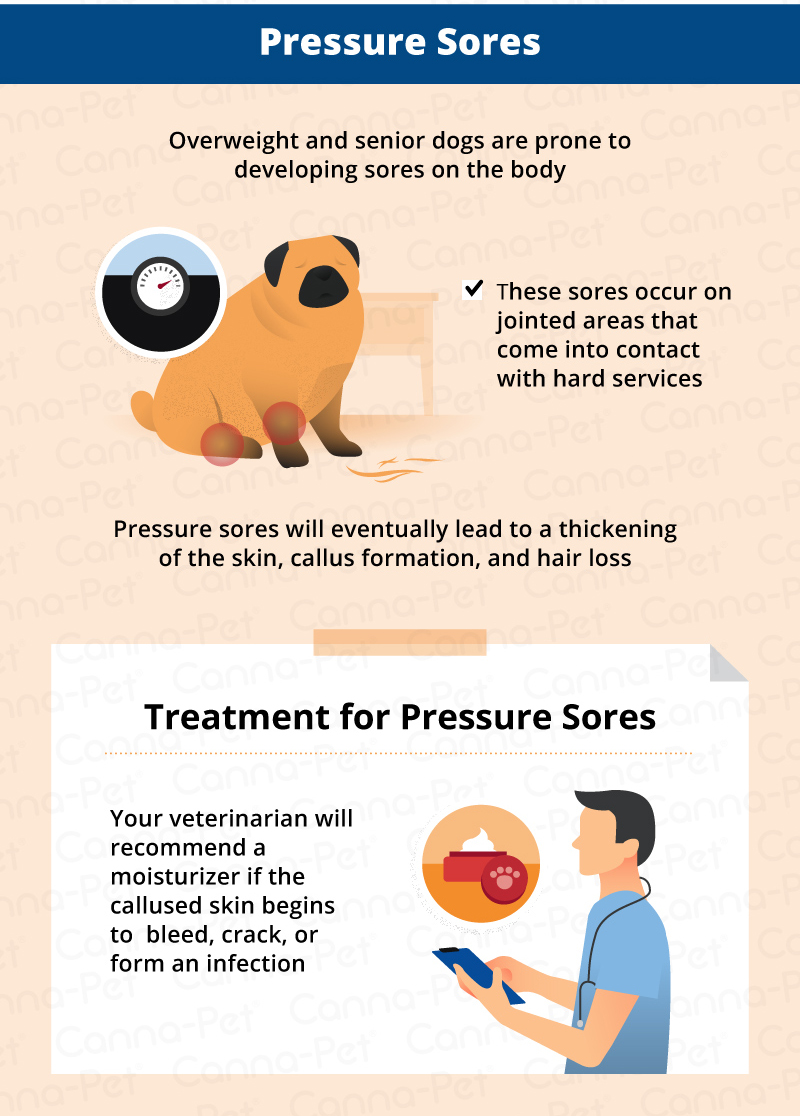
Other Reasons for Dog Hair Loss
In addition to the common skin infections we’ve covered, there are other reasons your dog may be losing his hair, from simple allergies to chronic conditions. Below, a checklist of other ailments you may want to consider when determining the cause of your fur baby’s persistent shedding, bald patches or related skin disorders:
- Allergic Reaction (including foods, fleas and various chemicals found in skin care products or other environmental catalysts)
- Foreign objects (such as glass, thorns or other objects lodged into the skin)
- Rashes/hives (due to allergic reactions from insect bites and stings, medications, plants and other substances)
- Trauma (chronic licking, also known as acral lick dermatitis)
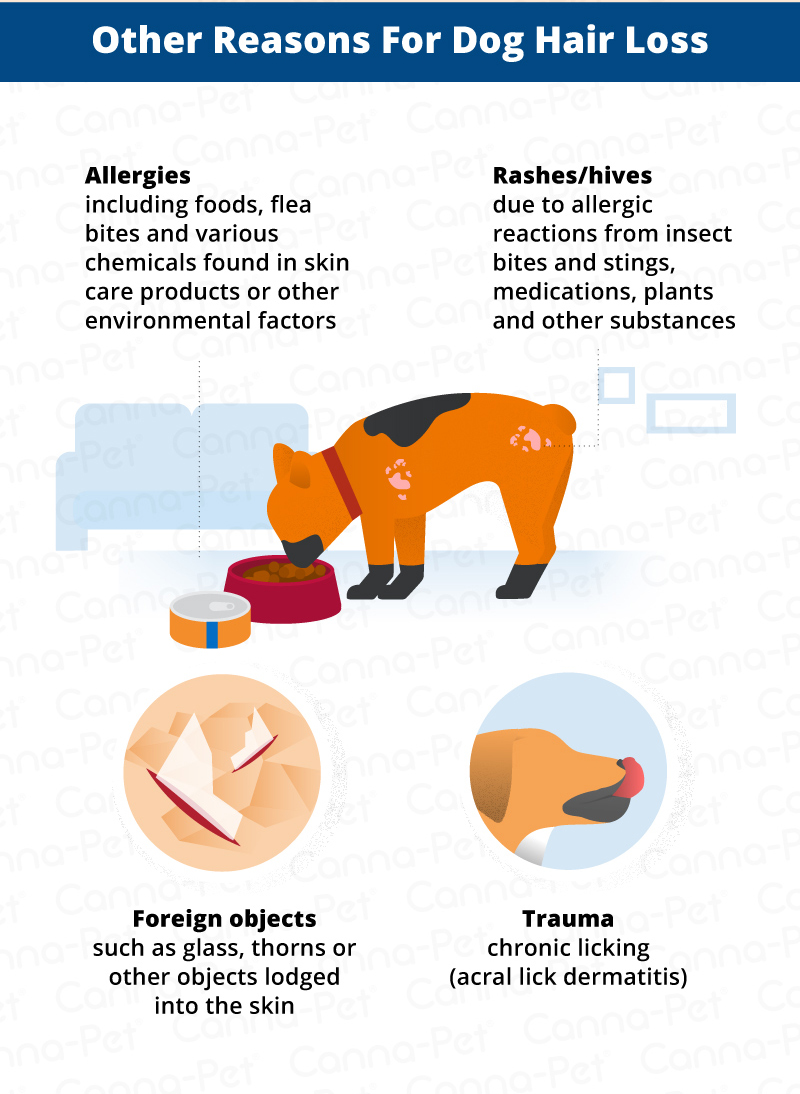
Treatments Options: Making Your Dog Comfortable
Depending on your dog’s specific skin condition, there are a number of treatment options. Be sure to consult with your vet first before administering any type of treatment, dietary changes or therapeutic remedies.
- Diet: If your vet believes your dog’s chronic skin condition is linked to food allergies, choosing the right dog food is vital to your pup’s well-being. You may want to discuss supplements as an addition to his diet.
- Hydrocortisone Shampoos & Sprays: If your fuzzy friend suffers from excessive licking and itchy skin, ask your vet to recommend safe hydrocortisone-based sprays to provide relief. Never use shampoos or products intended for humans, as their ingredients are often too harsh for their delicate skin.
If you notice bald spots, excessive hair loss or other skin abnormalities anywhere on your dog’s body, be sure to speak to your vet immediately, particularly if symptoms are accompanied by itching, irritated or infected skin, a foul odor, or changes in his behavior.
It may be indicative a relatively minor skin condition or signal an underlying health issue, but the only way to be certain is to consult with your veterinarian. With proper treatment, a healthy diet, and careful monitoring of your canine’s hair loss condition, you can typically manage further dog hair loss and provide him with sources of relief during any episodes.
